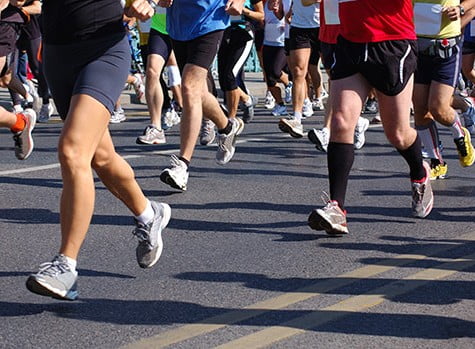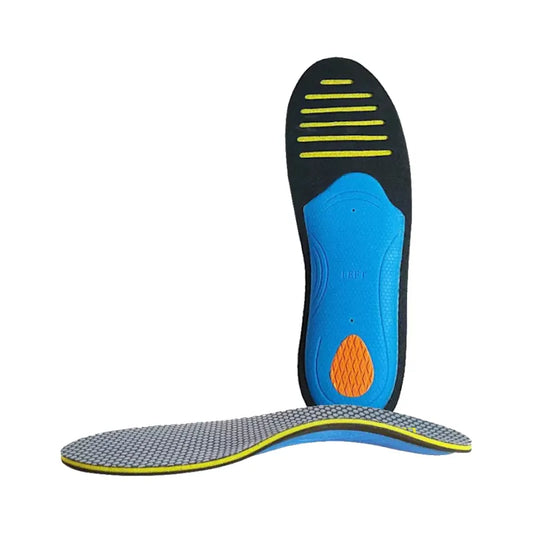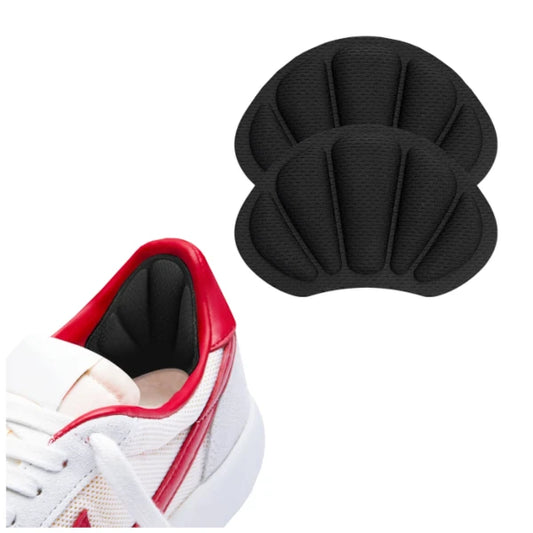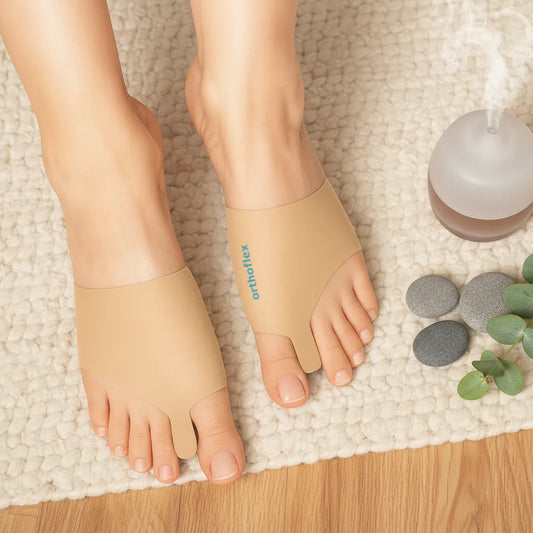
Foot Pain In Athletes: Causes And Recovery Strategies
Share
Foot Pain in Athletes: Causes, Recovery Strategies - Expert Guide
Foot pain is a common issue experienced by athletes participating in high-impact sports. Given the reliance on their feet for performance, foot pain becomes a significant concern and a major problem. Understanding the causes and recovery strategies for foot pain is crucial for athletes to stay at the top of their game. Proper management of foot pain not only helps prevent further injuries but also ensures that athletic performance is maintained.
Common Causes of Foot Pain in Athletes
Overuse Injuries
Overuse injuries, like stress fractures and plantar fasciitis, are common culprits behind foot pain in athletes. These injuries occur due to the repetitive strain put on the feet during intense physical activity. For instance, runners who log many miles without proper rest may develop stress fractures, small cracks in the bones of their feet. Plantar fasciitis, on the other hand, is caused by inflammation of the plantar fascia—a thick band of tissue that runs along the bottom of the foot—resulting from excessive strain also.
Poor Biomechanics
Foot pain can also arise from poor biomechanics. Athletes with flat feet or high arches may experience discomfort during physical activity due to improper weight distribution and lack of shock absorption. Flat-footed individuals tend to overpronate (roll inward) while running or jumping, which can affect not only muscles but also ligaments. Conversely, those with high arches often underpronate (roll outward), leading to inadequate shock absorption and increased pressure on certain areas of the foot but can also injury more further articulations like the knee or hip.
Inadequate Footwear
Wearing inappropriate footwear or shoes that do not fit properly can contribute to foot pain among athletes. Ill-fitting shoes may not provide adequate support or cushioning for the specific sport or activity being performed. This can result in discomfort, blisters, calluses, and even more serious foot-related problems over time.
Traumatic Injuries
Acute foot pain in athletes can be caused by traumatic injuries such as ankle sprains or fractures. These injuries usually occur as a result of sudden trauma or impact to the foot during sports activities. Ankle sprains involve stretching or tearing of ligaments around the ankle joint, while fractures refer to broken bones within the foot or ankle area.
Recovery Strategies for Athletes with Foot Pain
Resting and allowing time for proper healing is crucial for athletes looking to recover from foot pain. It may be tempting to push through the pain and continue training, but this can exacerbate the injury and prolong the recovery process.
Physical therapy exercises that target specific muscles and joints can play a significant role in rehabilitating foot injuries. These exercises help strengthen weakened muscles, improve flexibility, motor control and enhance overall stability. A physical therapist can create a tailored exercise program based on the athlete's specific injury and needs.

In addition to exercises, there are other strategies that athletes can incorporate into their recovery routine. Utilizing ice packs on the affected area can help reduce inflammation and alleviate foot pain. Compression wraps provide support to the injured area, while elevation techniques help reduce swelling.
It's important for athletes to remember that recovery doesn't mean complete inactivity. Incorporating low impact activities like swimming or cycling into their training routines can facilitate recovery while maintaining fitness levels. These activities put less stress on the feet while still providing cardiovascular benefits.
While these strategies can be beneficial in recovering from foot pain, it's essential for athletes to consult with medical professionals such as doctors or physical therapists before implementing any new treatment methods. Each individual's injury is unique, and what works for one person may not work for another.
By following these recovery strategies and seeking appropriate medical guidance, athletes can increase their chances of successfully overcoming foot pain and returning to their sport stronger than ever.
Prevention Tips for Foot and Ankle Injuries
To prevent foot and ankle injuries among athletes, there are several key strategies that can be implemented:
Appropriate Footwear
Wearing proper footwear designed for specific sports activities is crucial in preventing foot and ankle injuries. This means investing in shoes that provide adequate support, cushioning, and stability.
Stretching Exercises
Regular stretching exercises focusing on the lower extremities can greatly improve flexibility and reduce the risk of injury. Athletes should incorporate stretches that target the calves, Achilles tendons, and plantar fascia into their post-workout routines. This helps to loosen tight muscles and tendons, increasing range of motion and reducing strain on the feet.
Gradual Training Progression
Rather than engaging in sudden spikes of intense training, athletes should gradually increase their training intensity over time. This approach minimizes the chances of developing overuse injuries in the feet. By allowing sufficient rest periods between workouts and gradually building up strength and endurance, athletes can avoid placing excessive stress on their feet.
Proper Warm-Up
Ensuring a proper warm-up before engaging in physical activity is essential for preventing foot and ankle injuries. A dynamic warm-up routine prepares the muscles, tendons, and ligaments for optimal performance while reducing injury risks. Incorporating exercises such as jogging or jumping jacks gets blood flowing to the feet, promoting circulation and enhancing joint mobility.
By implementing these prevention tips - wearing appropriate footwear, performing regular stretching exercises, gradually increasing training intensity rather than sudden spikes, and ensuring a proper warm-up - athletes can significantly reduce the risk of foot and ankle injuries during sports activities.
Importance of Proper Warm-up in Athletes
A proper warm-up routine is crucial for athletes to prevent foot pain and injuries during physical activity. It's not just about stretching; a thorough warm-up prepares the body for intense training sessions, increases blood flow, and warms up the muscles. Here are some key points on why a proper warm-up is important:
Increases Blood Flow and Warms Up Muscles
Engaging in a warm-up routine helps increase blood flow throughout the body, including the feet. This increased blood flow delivers oxygen and nutrients to the muscles, preparing them for action. Warming up the muscles helps improve their flexibility and elasticity, reducing the risk of strains or tears.
Improves Joint Mobility and Range of Motion
Dynamic stretching exercises during warm-ups can significantly improve joint mobility and range of motion in athletes. These exercises involve active movements that mimic the motions performed during sports activities. By incorporating dynamic stretches into their warm-up routines, athletes can enhance their overall flexibility and mobility and reduce the chances of sustaining foot injuries.
Enhances Muscle Performance
Light aerobic exercises before intense training sessions can enhance muscle performance by increasing heart rate and circulation. This allows more oxygen-rich blood to reach the muscles, improving their endurance and strength. When muscles are properly warmed up, they are less likely to fatigue quickly or become strained during physical activity.
Mental Preparation
Incorporating sport-specific movements into warm-up routines can help athletes mentally prepare for their activities. By rehearsing specific actions or techniques related to their sport, athletes can focus their minds on what lies ahead. This mental preparation contributes to better concentration, coordination, and overall performance.
Choosing and Maintaining Athletic Footwear
To prevent foot pain in athletes, it is crucial to select footwear that provides proper arch support, cushioning, and stability. This helps to reduce the risk of injuries and ensures optimal performance. Regularly replacing worn-out shoes is essential for maintaining adequate shock absorption and preventing foot-related issues.
Custom orthotics or inserts can be beneficial for athletes experiencing foot pain due to biomechanical problems. These devices offer additional support and help alleviate discomfort during physical activity. Consulting with a podiatrist or sports medicine professional can provide valuable guidance in determining the need for custom orthotics.

Proper cleaning and maintenance of athletic footwear are often overlooked but play a significant role in prolonging its lifespan and ensuring optimal functionality. Regularly removing dirt, debris, and sweat from shoes not only enhances their appearance but also prevents the growth of bacteria that can cause unpleasant odors or infections.
Here are some key points to consider when selecting and maintaining athletic footwear:
Proper Arch Support, Cushioning, and Stability
- Choose shoes that provide adequate arch support to minimize strain on the feet.
- Opt for models with sufficient cushioning to absorb impact forces during high-impact activities.
- Look for stability features such as reinforced midsoles or heel counters to maintain proper alignment and prevent excessive pronation or supination.
Regular Replacement of Worn-Out Shoes
- Monitor your shoes' condition regularly, checking for signs of wear such as flattened outsoles or decreased cushioning.
- Replace your athletic footwear every 300-500 miles or when you notice significant signs of deterioration.
Custom Orthotics or Inserts
- Consider using custom orthotics if you experience persistent foot pain or have biomechanical issues.
- Consult with a healthcare professional who specializes in sports medicine or podiatry to determine if custom orthotics are necessary.
Proper Cleaning and Maintenance
- Clean your athletic shoes regularly by wiping them down with a damp cloth or using a gentle cleanser.
- Allow your shoes to air dry completely before wearing them again.
- Store your footwear in a cool, dry place away from direct sunlight to prevent damage.
By following these guidelines for selecting and maintaining athletic footwear, athletes can minimize the risk of foot pain and injuries while optimizing their performance on the field or court.
Managing Foot Pain in Athletes
In conclusion, managing foot pain is crucial for athletes to maintain their performance and prevent further injuries. By understanding the common causes of foot pain, such as overuse or improper footwear, athletes can take proactive steps to address these issues. Recovery strategies, including rest, ice, and physical therapy exercises, play a vital role in alleviating foot pain and promoting healing. Implementing prevention tips like proper warm-up routines and selecting appropriate athletic footwear can significantly reduce the risk of foot and ankle injuries.
To ensure optimal performance and long-term health, it's essential to prioritize your foot care as an athlete. Take the time to listen to your body and address any signs of discomfort promptly. Remember that your feet are the foundation of your athletic abilities, so don't neglect them. Incorporate these recovery strategies into your routine and make informed choices. By doing so, you'll not only recover from existing foot pain but also prevent future injuries that could hinder your progress on the field or court.
FAQs
How long does it take for foot pain in athletes to heal?
The healing time for foot pain in athletes varies depending on the severity of the injury or condition causing the pain. Mild cases may resolve within a few days or weeks with proper rest and treatment. However, more severe conditions or injuries may require several weeks or even months of rehabilitation before complete recovery and some will ultimately require surgery.
Can I continue training while experiencing foot pain?
It's generally recommended to avoid high-impact activities that exacerbate foot pain until you have properly addressed the underlying cause of the pain. Continuing intense training without allowing sufficient time for rest and recovery can worsen the injury or delay healing.
Are there specific exercises that can help alleviate foot pain?
Yes, there are various exercises that can aid in relieving foot pain in athletes. These exercises often focus on strengthening the muscles and improving flexibility in the feet and ankles. Examples include toe curls, calf stretches, and ankle rotations. However, it's crucial to consult with a healthcare professional or physical therapist for guidance on which exercises are appropriate for your specific condition.
How can I prevent foot pain during athletic activities?
To prevent foot pain during athletic activities, it's important to wear proper footwear that provides adequate support and cushioning for your specific sport. Implementing a regular warm-up routine that includes mobility exercises can help prepare your feet and ankles for physical activity. Gradually increasing the intensity of training sessions and listening to your body's signals of discomfort are also essential in preventing foot pain.
When should I seek medical attention for foot pain as an athlete?
If you experience persistent or worsening foot pain despite rest and self-care measures, it is advisable to seek medical attention from a healthcare professional specializing in sports medicine or orthopedics. They can evaluate your condition, provide an accurate diagnosis, and recommend appropriate treatment options tailored to your needs.
Author Bio

Marlene Carvalho
Certified Sports Physiotherapist of Elite and Olympic athletes; Performance Coach to racing drivers
Marlene Carvalho is a sports physiotherapist passionate about all things sports.






